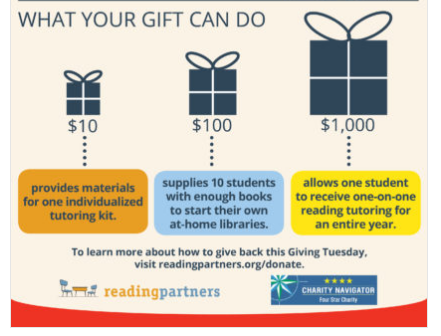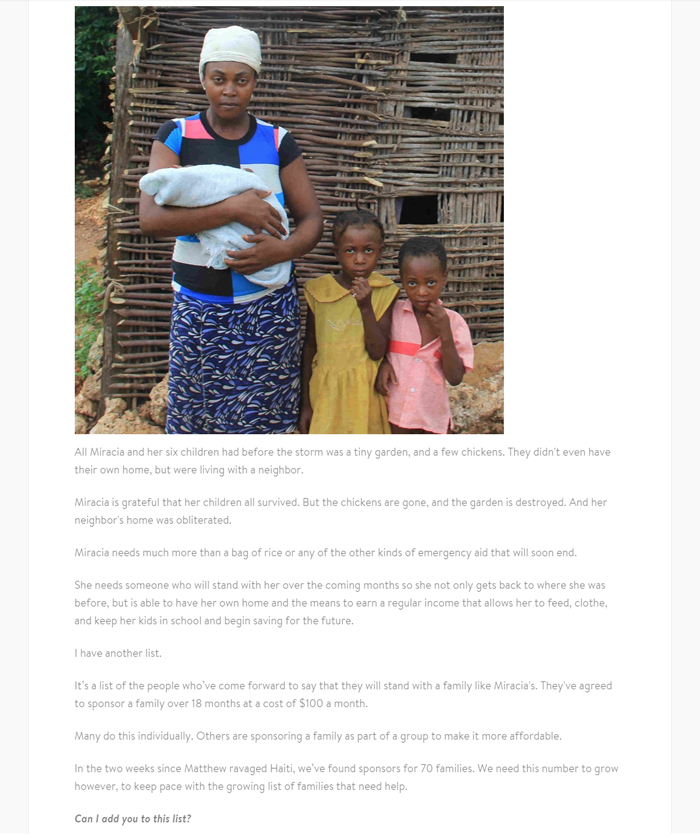#GivingTuesday is coming! Whether you’re kicking off your year-end fundraising or doing a stand-alone campaign, this Global Day of Giving is a great way to engage your community, rally your supporters, and raise money for your organization.
At least, it is if you tell people about it.
It’s time for some emails.
While social media is the star of #GivingTuesday, email is an important player, too. You’ll use email to engage and recruit personal fundraisers, inform your community about your campaign, and inspire donors to give. It may not have the star power of social media, but #GivingTuesday wouldn’t work without it.
For your campaign, you’ll need three specific kinds of #GivingTuesday emails:
- Informational Emails
- Personal Fundraiser Emails
- Day-Of Solicitations
Download your #GivingTuesday promotional email templates + examples:
Let’s take a look at each kind of email and what it is, who receives it, and how it works in your campaign.
Informational Emails: Spread The Word
If you build a campaign in the forest, and nobody is there to see it, do you raise money? This is not a Zen koan, this is a very easy question, and the answer is “no.”
It may seem very obvious, but it’s worth the reminder: In order for people to participate in your campaign, they have to know it exists.

#GivingTuesday is in the thick of the holidays, shopping season, and what I will lovingly characterize as a fundraising melee, with every nonprofit vying for donor attention. Cut through the noise and put your campaign front and center with an informative and inspiring email.
What They Are: Emails that inform people about your campaign.
Who Receives Them: Your general audience of supporters (i.e. your entire email list)
Content: Information about your campaign–when it’s happening, what you’re raising money
for, the impact donations will make.
Sending Schedule: About ten days before #GivingTuesday (November 15 looks good for 2018’s event), and then send a reminder on Cyber Monday.
Send Them Because: People need to know your campaign is happening and how they can help.
Personal Fundraiser Emails: Recruit And Rally
Personal fundraisers volunteer to raise money on behalf of an organization. They share their time, social networks, and passion with nonprofits. They make #GivingTuesday happen. Keep them in the loop with personal fundraiser emails.
What They Are: Communications with peer-to-peer fundraisers, designed to inspire, inform, and encourage them to fundraise
Who Receives Them: Potential and committed personal fundraisers
Content: Recruiting messages, inspiring stories, logistics, updates, and encouragement
Sending Schedule: You’ll need to communicate with your personal fundraisers quite a bit.
- Before the Campaign:
- Send your first recruiting email about six weeks before #GivingTuesday (early October is good).
- Send a reminder about a week later and as needed to recruit fundraisers.
- Send a welcome email as people join the campaign (this can be automated).
- About three weeks before the campaign, send your fundraisers their campaign toolkit.
- While not strictly necessary, I personally would send a “thankful for you” message on Thanksgiving
- Send one more “Wooo, here we go!” encouragement message on Cyber Monday
- During #GivingTuesday:
- Update them on major milestones
- Congratulate fundraisers who have reached personal goals
- Encourage them to keep sharing their campaigns
- After #GivingTuesday
- Thank them
- Report final results
Send Them Because: Fundraisers are volunteers who need support and encouragement
Day-Of Solicitations: Inspire And Ask
Last, but certainly not least, you’ll send some emails asking for money on #GivingTuesday. These direct asks and updates make giving easy for donors.
What They Are: Messages that inspire and request giving
Who Receives Them: Your general audience (segment your peer-to-peer fundraisers out)
Content: Stories that demonstrate the impact of donors, and requests for donations.
Sending Schedule: Send three–morning, afternoon, evening. If you can, segment out people who give during the day, so they don’t keep getting asked. If it’s nine o’clock and you’re almost to your goal, you can send a fourth one announcing this fact and asking for a final push.
Send Them Because: People need to be asked and inspired in order to give.
Five Elements Of An Excellent GivingTuesday Email
Whichever kind of email you’re sending, include these five elements to supercharge its impact:
- Results-Focused
Demonstrate the change you’re trying to accomplish, and what a gift can do. Reading Partners illustrated the impact of different giving levels in their GivingTuesday infographic.
- Donor-Centric
Make the email about your donor, not your need. After all, the email is in their inbox with their name on it; it’s not weird that they’d want to know what it has to do with them. In addition to making sure it actually is addressed to them (no more “Dear Friend” emails! I mean it!), center the donor in the message itself.Check out this update from Beyond Borders. While it tells about Miracia and her family’s material needs, it’s about the donor by the fourth paragraph: “She needs someone who will stand with her…” This is a message about being a person who helps.

- Urgent
#GivingTuesday is a short time frame, so the urgency to drive giving is already there. Emphasize it by using time-sensitive language, like: Now, Before 5 PM, Three more hours! - Tell A Story
Stories are memorable and moving. Telling a quick story about people who benefit from your cause, or the way a change makes the world a better place, engages emotions, activates empathy, and inspires giving. Your story doesn’t have to be long or detailed to be powerful. Look at this story from World Bicycle Relief: it’s short and simple, but we see the impact a bicycle can have.

- Simple Call To Action
The point of all these emails is to encourage action. We want people to give, become fundraisers, and share our campaigns. The best way to get people to do that is to inspire and then ask them. Make sure each email features a clear call to action, like, “Join the Campaign,” or “Donate Now.”To boost your call to action, make it easy to do. Link directly to your donation page, embed the video you want supporters to watch, or put a share button at the end. The easier it is to give, share, and join, the more likely someone will actually do it.
Templates For Your #GivingTuesday
We called you to action, so now, to take our own advice, we’ve made it really easy. We wrote the emails for you.
Okay, so we didn’t write every single email. You’ll need to add the specifics. But we did create email formulas for your #GivingTuesday campaign, along with timelines for sending them.
Download our toolkit to get started spreading the word, recruiting and rallying your fundraisers, and inspiring your supporters this #GivingTuesday




